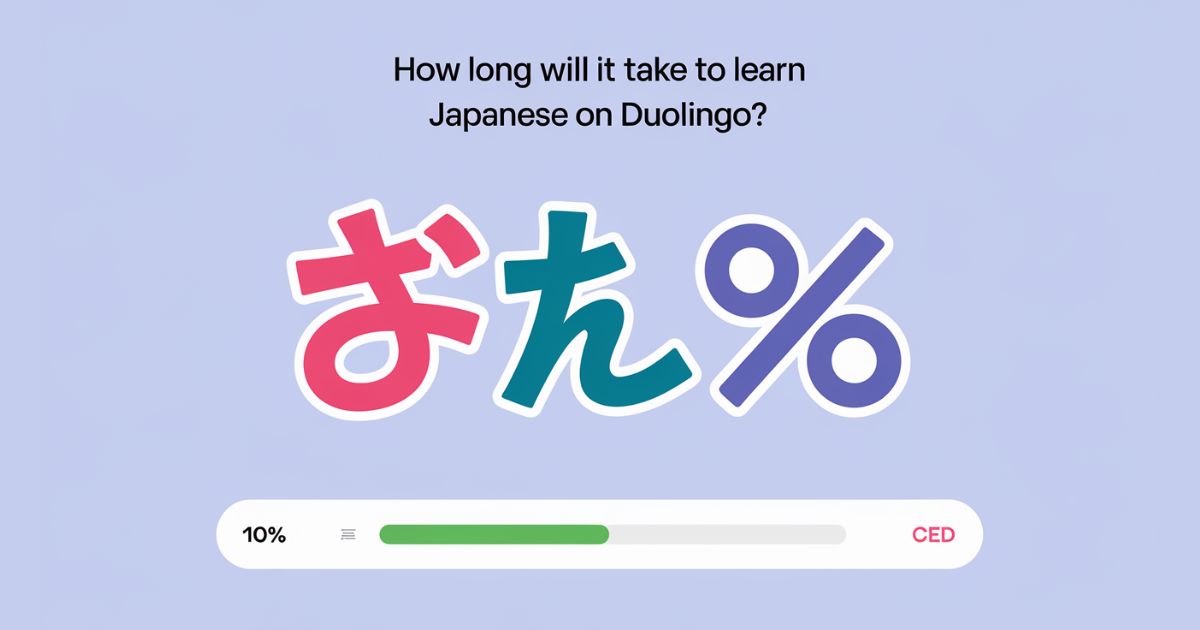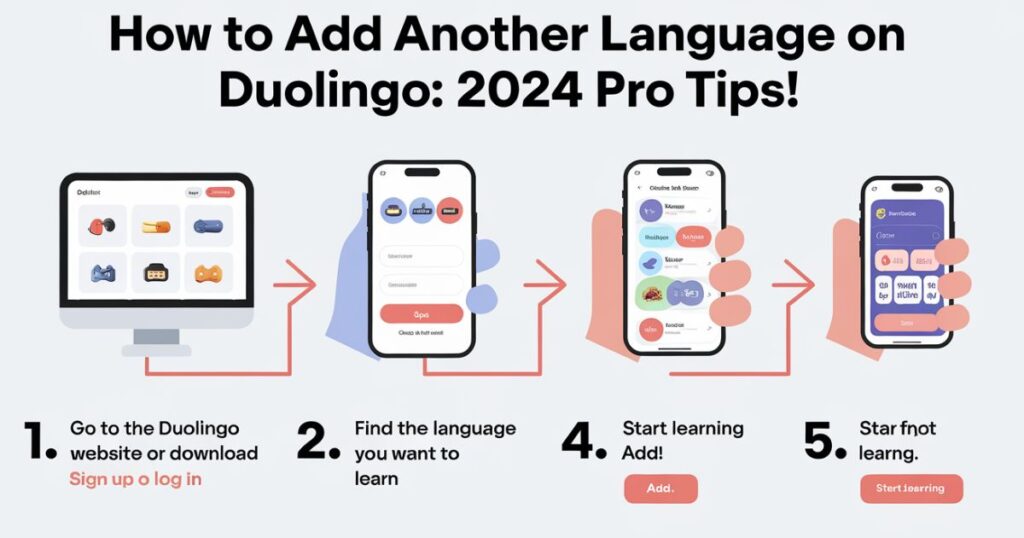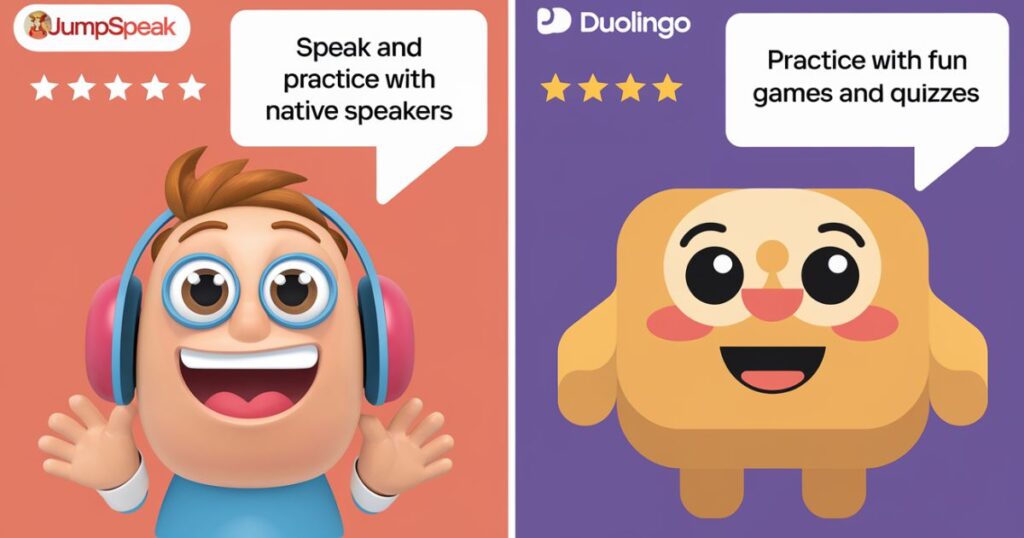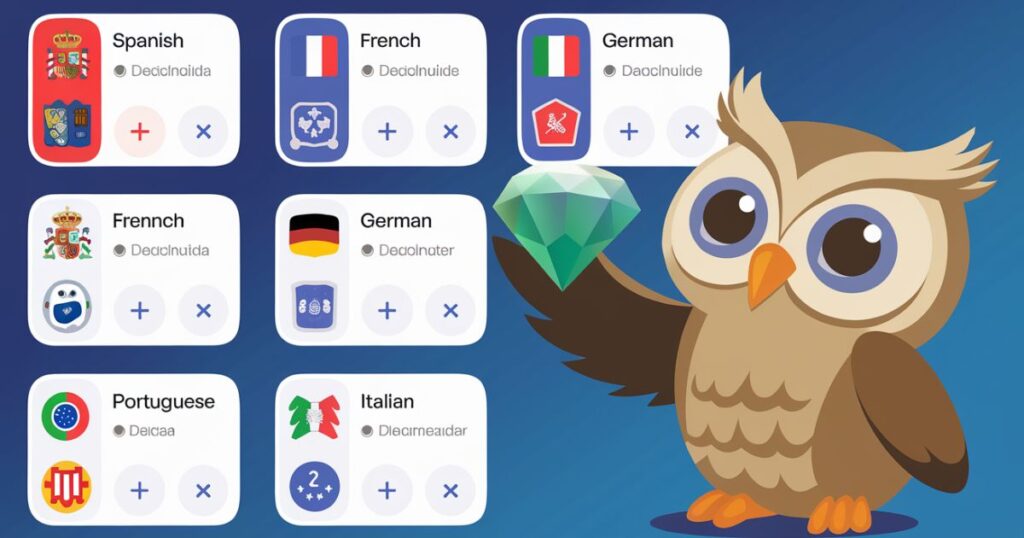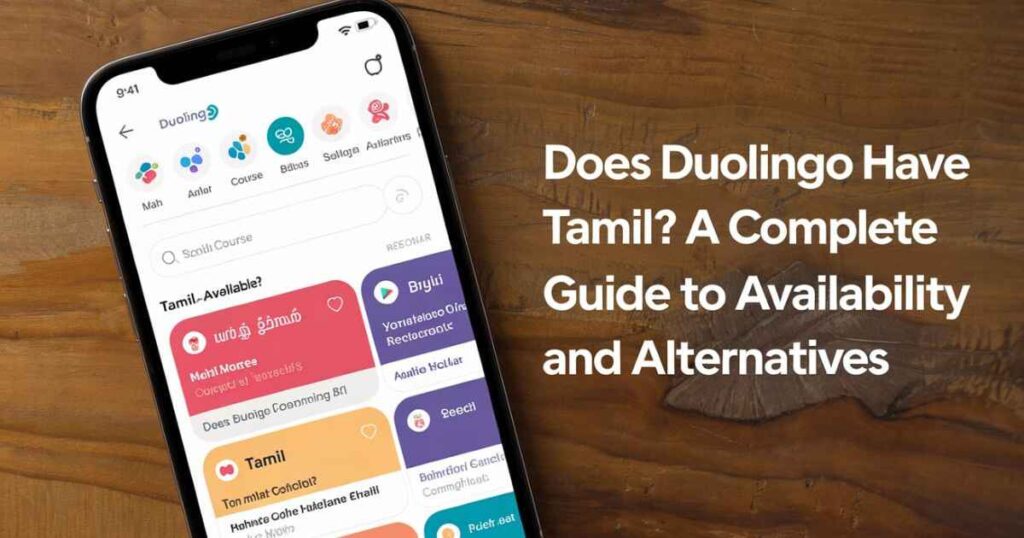The digital revolution has transformed language learning, with the Duolingo Japanese course emerging as a powerful tool for mastering this complex language.
This comprehensive guide will walk you through every aspect of learning Japanese through this innovative platform.
Understanding Japanese Writing Systems
Japanese writing presents unique challenges with its three distinct systems. Let’s explore how Duolingo breaks down these components into manageable pieces for effective language learning.
The Foundation: Hiragana
Hiragana serves as the cornerstone of Japanese literacy. This phonetic system represents every sound in the Japanese language through 46 basic characters. Duolingo introduces hiragana gradually, teaching both recognition and writing through intuitive character tracing exercises.
Think of hiragana as the alphabet you must master before reading your first book. The platform uses innovative interactive exercises to help you memorize each character’s shape and sound. Through consistent practice, most learners achieve basic hiragana literacy within 2-3 weeks of dedicated study.
More Post: The Ultimate Guide to Mastering Duolingo Leagues
Katakana: The Bridge to Modern Japanese
While hiragana handles native Japanese words, katakana opens doors to the modern world. This angular writing system primarily deals with foreign loanwords, making it essential for understanding contemporary Japanese culture.
Duolingo’s approach to katakana instruction focuses on practical applications, teaching words you’ll frequently encounter in real-life situations.
For example, you’ll learn how “コーヒー” (kōhī) means coffee, and “スマートフォン” (sumātofon) means smartphone. This immediate practical application helps maintain motivation during the learning process.
Kanji: The Long-Term Journey
The introduction of kanji writing marks a significant milestone in your Japanese learning journey. Unlike the phonetic systems, each kanji character carries meaning rather than just sound. Duolingo’s kanji introduction strategy follows a carefully structured approach:
Early Stage (Months 1-3): Basic kanji characters appear alongside familiar hiragana, allowing for gradual familiarization. You’ll start with simple characters like 人 (person) and 日 (day).
Intermediate Stage (Months 4-8): More complex characters enter the picture, accompanied by compound words and common phrases. The platform introduces kanji for everyday concepts like 食べる (to eat) and 飲む (to drink).
Advanced Stage (Months 9+): Sophisticated kanji combinations and advanced vocabulary become regular features of your lessons. You’ll encounter business-related terms and abstract concepts.
Optimizing Your Learning Experience

Creating an Effective Study Schedule
Successful language learning requires consistent daily practice. Research shows that short, regular study sessions prove more effective than lengthy, irregular ones. Here’s how to structure your time:
Morning Sessions (15-20 minutes): Focus on new material when your mind is fresh. Complete new lessons and tackle challenging concepts during these sessions.
Evening Reviews (10-15 minutes): Reinforce the day’s learning through review exercises and practice sessions. This helps move information from short-term to long-term memory.
Weekend Practice (30-45 minutes): Use longer weekend sessions for comprehensive review and tackling more complex topics. This is also an excellent time for extra writing practice and story exercises.
Leveraging Interactive Features
Duolingo’s interactive learning features go beyond simple flashcards and multiple-choice questions. The platform offers:
Stories and Dialogues: Immerse yourself in context-rich scenarios that demonstrate natural language use. These features help develop listening comprehension and reading skills simultaneously.
Speaking Exercises: Practice pronunciation with speech recognition technology. The platform provides immediate feedback on your accent and intonation.
Writing Challenges: Engage in character tracing exercises that help develop proper stroke order and muscle memory for writing Japanese characters.
Measuring Progress and Setting Goals
Track your journey toward Japanese fluency through multiple metrics:
Crown System: Each skill level earned represents measurable progress in specific areas of the language. Aim to achieve at least three crowns in each skill before moving forward.
XP Tracking: Daily experience points provide a quantifiable measure of your effort and engagement. Set weekly XP goals to maintain consistent progress.
Achievement Milestones: Celebrate completing units, mastering writing systems, and reaching fluency markers. These accomplishment markers help maintain motivation throughout your learning journey.
Advanced Study Techniques
As you progress, incorporate these advanced learning strategies:
Immersion Activities:
- Watch Japanese news with subtitles
- Listen to Japanese podcasts during commutes
- Read Japanese manga or simple novels
- Practice writing daily journal entries in Japanese
Pattern Recognition: Understanding grammar patterns accelerates learning. Look for recurring structures in sentences and practice using them in different contexts.
Cultural Integration: Connect language learning with cultural understanding through Japanese media, cooking, and art appreciation.
Community and Support
Leveraging Social Features
The Duolingo community enhances your learning experience through:
Discussion Forums: Engage with fellow learners to share challenges and solutions. Native speakers often provide valuable insights and corrections.
Study Groups: Join or create study groups focused on specific learning goals or JLPT preparation.
Competitive Elements: Participate in leagues and challenges to maintain motivation and track progress against peers.
Moving Beyond Basics
Preparing for Real-World Application
Bridge the gap between app-based learning and real communication:
Practice Partners: Find language exchange partners through Duolingo’s community features or external platforms.
Media Immersion: Gradually transition from learning materials to authentic Japanese content, starting with simple news articles and progressing to more complex media.
Cultural Events: Participate in local Japanese cultural events or online communities to practice your skills in real-world contexts.
Remember that achieving Japanese mastery requires patience, consistency, and strategic practice. While Duolingo provides an excellent foundation, supplement your learning with various resources and real-world practice opportunities to reach your language proficiency goals.
Real-World Applications and Beyond
Integration with Daily Life
Making Japanese part of your daily routine accelerates language mastery. Consider these practical applications:
Change your phone’s language settings to Japanese for passive exposure. Label household items with Japanese words. Practice ordering at Japanese restaurants using learned phrases. These small steps create an immersive environment outside formal study sessions.
Professional Development Opportunities
Japanese fluency opens career doors in various sectors:
Translation and Interpretation: The demand for Japanese-English language professionals continues growing. Many start with freelance translation work while building proficiency.
Business Relations: Japanese companies value professionals who can bridge cultural and linguistic gaps. Understanding business Japanese through Duolingo’s advanced lessons provides a foundation for international commerce.
Cultural Competency Development
Language mastery extends beyond vocabulary and grammar. Duolingo integrates cultural elements through:
Contextual Learning: Lessons incorporate cultural notes about proper etiquette, customs, and social norms. Understanding when to use formal versus casual language reflects cultural awareness.
Seasonal Content: Special lessons highlight Japanese festivals, holidays, and traditions, enriching your cultural knowledge while building vocabulary.
Advanced Learning Techniques

Memory Enhancement Strategies
Improve retention through these proven methods:
Mnemonics create memorable associations for complex kanji. Visualization techniques connect abstract concepts to concrete images. Spaced repetition reinforces learning at optimal intervals.
Pattern Recognition and Grammar Mastery
Understanding Japanese grammar patterns accelerates learning:
Sentence Structure: Japanese follows a subject-object-verb pattern, unlike English’s subject-verb-object order. Regular practice with interactive exercises helps internalize this structure.
Particle Usage: Master particles through contextual learning rather than rote memorization. Duolingo’s approach presents particles in natural sentence patterns.
Speaking Confidence Development
Build speaking skills through:
Shadow Practice: Repeat after native speakers in Duolingo’s audio lessons. Record yourself speaking and compare pronunciations.
Live Practice: Join language exchange groups online. Participate in virtual conversation sessions with native speakers.
Assessment and Progress Tracking
Measuring Fluency Levels
Track your progress through multiple metrics:
JLPT Alignment: Duolingo’s content roughly aligns with JLPT levels N5 through N3. Regular assessment helps gauge readiness for official testing.
Practical Benchmarks: Monitor ability to handle real-life situations like ordering food, giving directions, or discussing current events.
Goal Setting and Achievement
Set realistic milestones for your language learning journey:
Short-term Goals:
- Master hiragana within first month
- Complete basic conversation units
- Achieve 50-day streak minimum
Long-term Goals:
- Pass JLPT N4 within first year
- Read simple manga without translation
- Hold basic conversations with native speakers
Supplementary Resources
Enhanced Learning Materials
Complement Duolingo with additional resources:
Digital Tools: Japanese dictionary apps, kanji study programs, and pronunciation guides enhance learning efficiency.
Traditional Materials: Grammar reference books and practice workbooks provide structured supplementary practice.
Media Integration
Incorporate Japanese media for natural language exposure:
Entertainment: Watch Japanese movies with subtitles. Listen to J-pop music while reading lyrics. Play Japanese video games for interactive practice.
News and Current Events: Read NHK Easy News for simplified Japanese news content. Listen to Japanese podcasts during commutes.
Maintaining Motivation
Progress Visualization
Track achievements through:
Digital Progress Maps: Duolingo’s skill tree provides visual confirmation of advancement. Screenshot completion milestones for motivation.
Physical Tracking: Keep a study journal documenting daily achievements and challenges overcome.
Community Engagement
Stay motivated through social interaction:
Online Communities: Join Japanese learning forums and social media groups. Share progress and challenges with fellow learners.
Local Connections: Find Japanese cultural events in your area. Connect with local language exchange partners.
Remember that mastering Japanese is a marathon, not a sprint. Consistent practice through Duolingo’s structured approach, combined with real-world application and supplementary resources, creates a comprehensive path to fluency.
Success comes from maintaining motivation, tracking progress, and staying committed to your language learning goals.
More Post:
Frequently Asked Questions
How long does it take to learn Japanese on Duolingo?
With daily practice of 15-30 minutes, expect 6-8 months to reach basic conversation level. Full course completion typically takes 12-18 months for consistent learners.
What are the Japanese writing systems covered in the Duolingo course?
The course covers all three writing systems: Hiragana (basic phonetic), Katakana (for foreign words), and Kanji (Chinese characters), introduced in strategic progression.
How is the Duolingo Japanese course structured?
The course follows a skill-tree format, starting with basic greetings and progressing through vocabulary, grammar, and writing systems in manageable, bite-sized lessons.
What interactive features does Duolingo offer for learning Japanese characters?
Duolingo provides character tracing exercises, stroke-order demonstrations, matching games, and pronunciation practice with immediate feedback and audio support.
How does the Duolingo Japanese course progress through different topics?
Topics advance from basic greetings to complex conversations, gradually introducing new grammar patterns, vocabulary, and cultural context through themed units.
What practice methods and study techniques does Duolingo offer?
Features include spaced repetition, interactive exercises, speaking practice, writing drills, story-based learning, and customizable daily goals with progress tracking.
How can I achieve Japanese fluency goals on Duolingo?
Maintain consistent daily practice, complete all crown levels, use Stories feature, participate in challenges, and supplement learning with real-world Japanese exposure.
Can you become fluent with Duolingo Japanese?
Duolingo alone can’t make you fully fluent but provides solid foundations. Combine it with immersion and conversation practice for comprehensive language mastery.
Is Duolingo good to learn Japanese with?
Yes, it’s excellent for beginners and intermediate learners, offering structured progression, interactive features, and effective teaching methods for Japanese basics.
What level of Japanese can you get from Duolingo?
Duolingo can help you reach JLPT N4-N3 level, enabling basic conversations and fundamental reading/writing skills in everyday situations.
How long does it take to learn Japanese fluently?
Achieving fluency typically requires 2-4 years of dedicated study, including regular practice, immersion, and real-world application beyond just Duolingo.
Conclusion
Mastering Japanese through Duolingo offers a structured, engaging path to language proficiency. By combining the platform’s interactive features with consistent practice and real-world application, learners can achieve meaningful progress in their Japanese journey. Remember that success comes from dedication, smart study habits, and active engagement with the language.
Whether your goal is personal enrichment or professional development, Duolingo’s comprehensive approach provides the tools needed for Japanese language mastery. Start your journey today and embrace the rewarding challenge of learning this fascinating language.
Visit For More Blog’s: Duolingoabout

Welcome to DuolingoAbout.com! Your go-to hub for expert tips, tricks, and guides to mastering Duolingo. Simplify your language-learning journey with curated content designed for learners at all levels.
